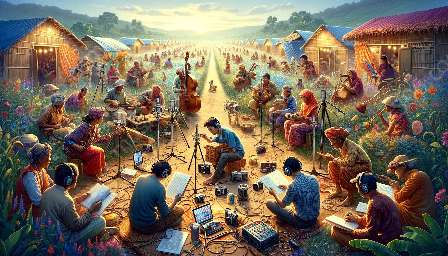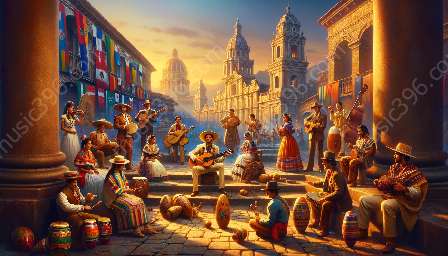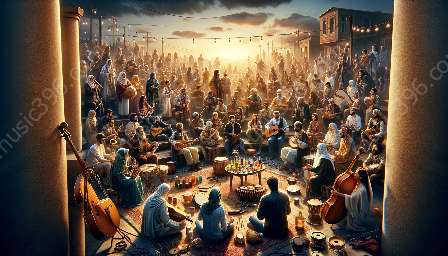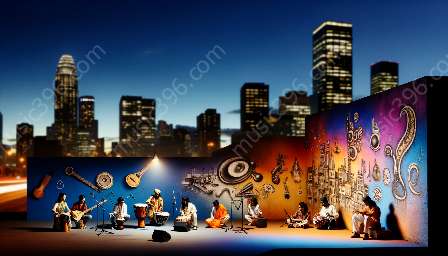Indigenous music is deeply intertwined with the concepts of time and space, shaping performances and compositions in North American Indigenous communities. This rich tapestry of ethnomusicological study reveals the profound influence of environment, cultural traditions, and historical narratives on musical expression. Let's delve into the complex interplay of time, space, and Indigenous music, uncovering the nuances and significance of these elements.
Understanding North American Indigenous Music
Before delving into the influence of time and space, it's essential to establish a foundational understanding of North American Indigenous music. Indigenous musical traditions are deeply rooted in the interconnectedness of the natural world, community values, and spiritual beliefs. These traditions are often passed down orally from generation to generation, embodying the cultural heritage and identity of Indigenous peoples. The music serves multifaceted purposes, including storytelling, ceremonial rituals, and social cohesion.
Time and Rhythmic Patterns
The concept of time is intricately woven into the fabric of Indigenous music, particularly through rhythmic patterns. In many Indigenous communities, rhythmic patterns are reflective of natural phenomena such as the heartbeat, flowing water, or the cyclical movement of celestial bodies. The intricate interplay of rhythm and time serves as a mirror to the natural environment, embodying a deep connection to the land and its rhythms.
Furthermore, the perception of time in Indigenous music often differs from the Western notion of linear time. Instead, Indigenous music can embody a cyclical and nonlinear perception of time, reflecting the ongoing cycles of nature, seasons, and ceremonial traditions. This unique temporal perspective shapes the rhythmic complexities and structures within Indigenous musical compositions and performances.
Space and Musical Context
In Indigenous music, the concept of space extends beyond physical dimensions to encompass the spiritual, cultural, and social contexts in which music is performed. The geographical landscapes and natural surroundings play a pivotal role in shaping musical expressions, with certain musical styles and instruments being intricately tied to specific environments. For example, the sounds and rhythms of drumming traditions may be deeply influenced by the echoing acoustics of a particular landscape.
Furthermore, spatial dimensions in Indigenous music are intertwined with the notion of sonic landscapes, where the interplay of sound and silence mirrors the natural environment. The profound connection to the land and the spiritual significance of specific locations infuse Indigenous music with a sense of place, creating a sonic tapestry that resonates with cultural identity and ancestral narratives.
Temporal and Spatial Dynamics in Performance
Indigenous music performances are imbued with intricate temporal and spatial dynamics, reflecting the interconnectedness of time, space, and cultural heritage. Ceremonial rituals, powwows, and social gatherings provide platforms for musical expression, where the cyclical nature of Indigenous time intersects with the spatial significance of communal gathering spaces.
The performative aspects of time and space are evident in the synchronized movements of dancers, the rhythmic pulse of drumming, and the melodic chants that reverberate through the air. These performances serve as embodied expressions of cultural continuity, bridging the gaps between past, present, and future through temporal and spatial dimensions.
Ethnomusicological Perspectives
Ethnomusicology offers invaluable insights into the multifaceted relationships between Indigenous music, time, and space. Through ethnographic research and scholarly inquiry, ethnomusicologists have explored the complex interplay of temporal and spatial dimensions within Indigenous musical traditions. Their studies shed light on the dynamic processes of musical transmission, performance contexts, and the transformative power of time and space on musical compositions.
Furthermore, ethnomusicological studies highlight the interconnectedness of Indigenous music with broader sociocultural dynamics, emphasizing the ways in which time and space intersect with issues of identity, resistance, and cultural revitalization. By engaging with Indigenous communities and their musical heritage, ethnomusicologists contribute to the preservation and documentation of diverse musical expressions, amplifying the voices of Indigenous musicians and composers.
Conclusion
The concept of time and space profoundly influences Indigenous music performance and composition within North American Indigenous communities. This intricate interplay of temporal and spatial dimensions shapes the rhythmic patterns, sonic landscapes, and performative dynamics of Indigenous music, reflecting the profound connection to cultural heritage and the natural environment. Ethnomusicological research continues to illuminate the rich tapestry of Indigenous musical expressions, offering meaningful insights into the transformative power of time and space on musical traditions. Through a deeper understanding of these dynamic relationships, we gain a deeper appreciation for the resilience, creativity, and enduring spirit of Indigenous music within the ever-evolving landscapes of time and space.



































